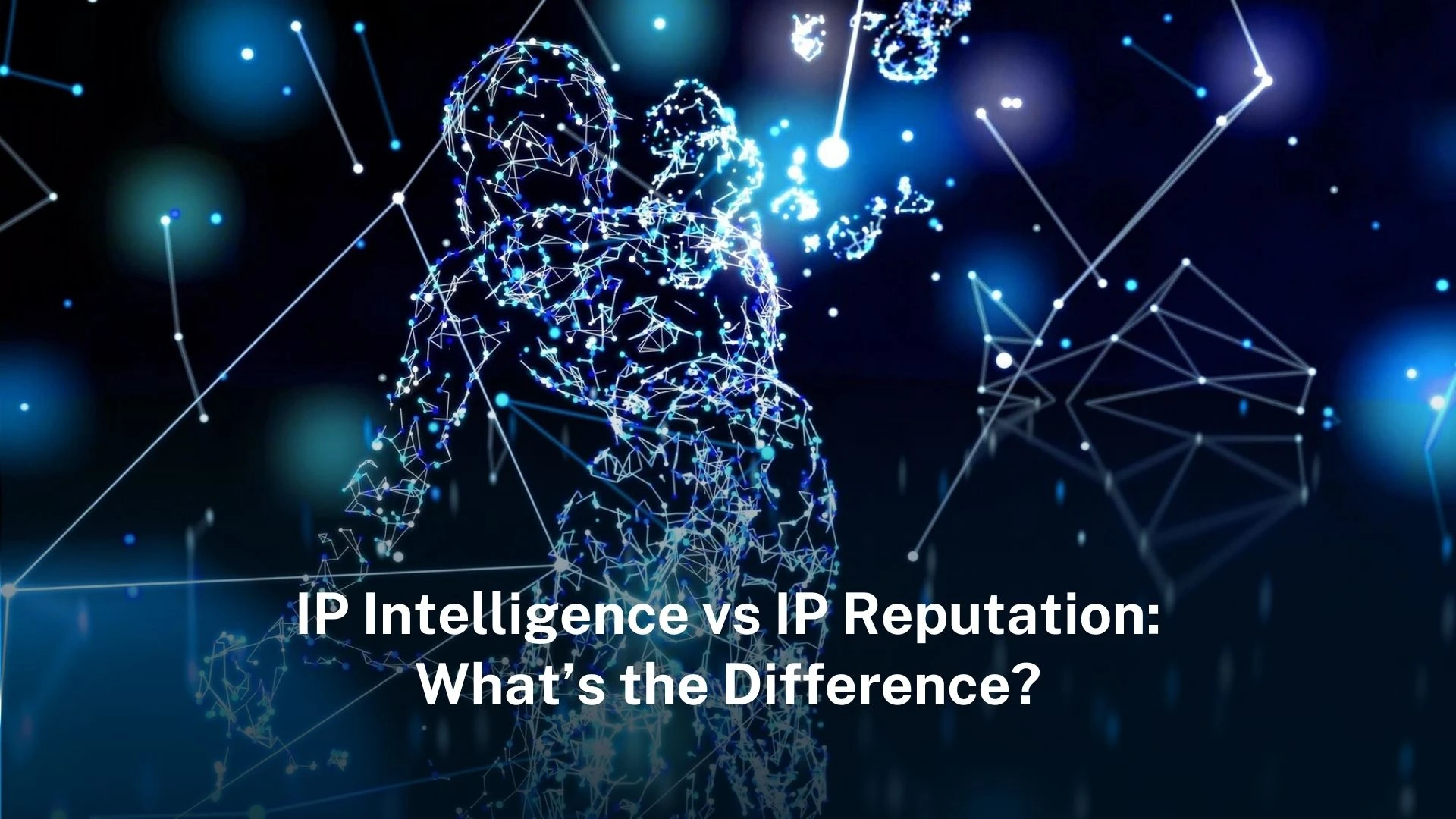Understanding IP Addresses
Every device uses an address to connect to the internet. That address is the IP address. It allows computers and servers to send and receive data. Without it you cannot browse websites or send emails. There are public and private addresses. Public ones face the wider internet. Private ones stay inside local networks. Internet routers use these addresses to guide data to its destination.
Table of Contents
ToggleIP addresses come in two versions. IPv4 uses billions of addresses. IPv6 expands that number greatly. The security system still mainly relies on the IPv4 protocol, but the application of IPv6 is steadily gaining popularity. Addresses tie to networks. These include home lines, data centres, or mobile networks. They also link to cloud providers or corporate servers.
What Is IP Intelligence?
IP intelligence refers to collecting detailed data around an IP address. This includes location, network provider, device type, and whether the IP uses a VPN or proxy. Analysts use this to enrich logs and alerts. That gives a clearer picture of each connection attempt.
Tools often add metadata such as ASN, time zone, and whether the IP is residential, corporate, or mobile. Organisations can then assess whether a connection is typical or unusual. A login from a familiar city is expected. A login via a cloud provider in a foreign country appears unusual.
Advanced intelligence tools detect mobile versus fixed access. They flag shared proxy services and masked traffic. They help organisations spot suspicious behaviour early. In fraud prevention teams can adjust trust or require challenge steps based on context.
Use Cases Of IP Intelligence
Companies use IP intelligence to spot fraud, tailor user experience, and monitor access. A bank may track a user’s typical location. If a login happens too far too quickly, it may trigger extra checks or block the attempt. That reduces suspicious access without blocking legit users.
E‑commerce firms use it to detect bots. They examine whether traffic comes from cloud data centre IPs or shared proxies. They might then restrict checkout attempts or demand a captcha challenge. Marketing teams refine targeted campaigns using city, timezone, or device data to improve relevance.
Enterprise administrators rely on intelligence for VPN access control. They can restrict access to particular countries or forbid known anonymiser IPs. That helps enforce compliance and preserve data integrity. It also helps manage remote access securely without disrupting user workflows.
What Is IP Reputation?
IP reputation is a trust score that reflects how an IP address has behaved over time. It tracks spam, phishing, malware, or denial‑of‑service campaigns. Security systems monitor these signals and tag IPs accordingly.
A low reputation may stem from blacklisting or multiple abuse reports. That can lead email servers and firewalls to block all traffic from that IP. Systems may reject incoming emails or drop connections from known bad addresses.
Reputation changes fast. A single spam event can plunge a score overnight. The recovery process may take several weeks or months. Shared IP ranges face longer remediation if one tenant causes damage. That can harm other users sharing the same subnet.
Why IP Reputation Matters In Email Systems
Email services depend heavily on reputation data. Low‑scoring IPs often see outright rejection or spam folder placement. That damages sender credibility and hampers communication.
Maintain your reputation by using clean email lists and appropriate email sending protocols. Avoid bounced emails and ensure that SPF, DKIM and DMARC-related measures have been correctly set up.Good practice reduces risk of blacklisting.
Security systems also filter inbound mail. IPs with poor reputation can trigger quarantine or outright blocking. Admin teams set limits to stop threats but avoid mistakes.
Real‑World Applications: Fraud Detection And Access Control
Organisations combine intelligence and reputation for better insight. For example, a login from a foreign IP with bad reputation triggers multi-factor prompts or is blocked. If the same login comes from a known high-reputation local IP, it is more likely allowed.
E‑commerce platforms monitor payment flows. Orders from anonymised IPs or low reputation addresses may be paused or flagged for manual review. That reduces fraud losses and customer chargebacks.
Cloud providers restrict access to critical services. They limit admin access to known clean IP ranges. That helps enforce regulatory compliance and audit requirements without over restricting user activity.
How Businesses Manage Poor IP Reputation
When a company finds its sending IP blacklisted, it must act quickly. That may involve checking mail logs, removing offending code, cleaning databases, and requesting delisting. Service providers may ask customers to rotate IPs to avoid reuse of tarnished ranges.
Corporate firewalls may quarantine traffic from IPs with poor reputation. Teams review feeds constantly, flag problem ranges and notify providers. They may shift email traffic or reassign IP space to contain damage.
Intelligence tools help by identifying if reputation issues tie to shared hosting or cloud networks. Companies may switch to residential or dedicated ranges to maintain clean history. That helps avoid collateral damage from neighbours’ misuse.
IP Intelligence Vs IP Reputation: Combined Usage
The real value lies in using both tools together. IP intelligence adds context. Reputation provides risk scoring. Together they deliver better decisions.
Fraud detection policies benefit by checking username location, IP type and history. Admin systems may allow a login from a low-risk IP while blocking suspicious ones.
Use intelligence to weigh signals. For example, a high-reputation IP from a new network still may be blocked if intelligence signals anonymiser usage. A low reputation IP may be allowed temporarily with step-up authentication if its intelligence shows a trusted corporate link.
Limitations Of Both Methods
IP reputation can mislabel shared IPs when one user misbehaves. This harms others on the same address. Reputation feeds may lack full coverage or update delays.
IP intelligence has limits too. It relies on mapping data that may be outdated or sometimes inaccurate. VPN providers may mask location. Cloud IPs may appear residential in some tools. That can skew results.
Overreliance on intelligence may lead to false positives. For example legitimate VPN use by remote staff may appear suspicious. Balance is key. Use both tools with human oversight and auditing to avoid errors.
Best Practices For Businesses
Maintain up‑to‑date prevention tools. Regularly review reputation feeds and audit intelligence accuracy. Monitor changes in IP mapping to track anomalies.
Set layered risk checks. Use intelligence data to add context and reputation to block known threats. Enable step-up authentication for medium-risk cases. Inform users when logins differ from normal patterns.
Share anonymised feedback. When reputation changes, coordinate with providers to clean the records. Rotate IP space if needed. Educate team members to maintain email hygiene.
FAQ
1. What is the main difference between IP intelligence and IP reputation?
IP intelligence gives facts like location and network type. IP reputation shows how trustworthy an IP is based on past actions.
2. Can a good IP reputation turn bad overnight?
Yes. One spam burst or abuse complaint can lower reputation quickly. Recovery may take time.
3. How do email services use IP reputation?
They rely on it to allow or reject messages. Low‑reputation IPs often trigger spam filtering or outright rejection.
4. How can companies improve their IP intelligence data?
They should refresh data often and validate mappings. They may combine data from multiple intelligence providers to reduce error.
5. Are IP reputation databases always accurate?
No. They may miss new threats or misclassify shared IPs. Regular review helps catch false positives or missed coverage.





I’ve been exploring for a little for any high-quality articles or blog posts in this sort of house . Exploring in Yahoo I ultimately stumbled upon this website. Studying this info So i’m happy to show that I’ve an incredibly excellent uncanny feeling I came upon just what I needed. I most certainly will make certain to do not fail to remember this site and provides it a glance on a relentless basis.
I needed to thank you for this good read!! I definitely loved every little bit of it. I have got you book marked to look at new stuff you post…
WOW just what I was looking for. Came here by searching for %meta_keyword%
WOW just what I was searching for. Came here by searching for noida escort
Hi there, just wanted to tell you, I loved this article. It was inspiring. Keep on posting!
I got this site from my pal who informed me about this site and now this time I am browsing this web page and reading very informative posts at this time.
hi!,I really like your writing so much! percentage we keep up a correspondence more about your post on AOL? I need a specialist on this house to solve my problem. Maybe that is you! Looking forward to peer you.
You can definitely see your expertise within the article you write. The world hopes for more passionate writers such as you who are not afraid to mention how they believe. All the time go after your heart.
Howdy! I know this is kinda off topic however I’d figured I’d ask. Would you be interested in exchanging links or maybe guest writing a blog article or vice-versa? My site covers a lot of the same topics as yours and I believe we could greatly benefit from each other. If you happen to be interested feel free to shoot me an email. I look forward to hearing from you! Superb blog by the way!
I all the time used to study piece of writing in news papers but now as I am a user of web so from now I am using net for articles, thanks to web.
I used to be able to find good advice from your articles.
Greetings! Very useful advice within this post! It is the little changes that make the greatest changes. Many thanks for sharing!
I know this web page offers quality dependent content and additional stuff, is there any other web page which provides these kinds of information in quality?
Nicely written post. I really like the topic discussed here. I’ll come back from time to time for more posts like this one.
This is a really nice page. It’s very engaging and well written. I’ll check back for more posts like this one.
An interesting discussion is price comment. I think that it is best to write extra on this matter, it might not be a taboo topic however generally people are not enough to talk on such topics. To the next. Cheers
Great work! This is the kind of information that should be shared around the internet. Shame on Google for now not positioning this post upper! Come on over and talk over with my site . Thanks =)
This is a really nice post. It’s very informative and well organized. I’ll come back from time to time for more posts like this one.
I do not even know the way I stopped up here, but I thought this put up used to be good. I do not recognise who you are however definitely you are going to a famous blogger for those who aren’t already 😉 Cheers!
It is really a nice and useful piece of info. I?m glad that you shared this helpful info with us. Please keep us up to date like this. Thanks for sharing.
Great post. I was checking constantly this blog and I am impressed! Extremely useful information specially the last part 🙂 I care for such information a lot. I was seeking this certain info for a very long time. Thank you and good luck.
What?s Happening i am new to this, I stumbled upon this I have found It absolutely helpful and it has helped me out loads. I hope to contribute & assist other users like its helped me. Great job.
Wow, wonderful blog layout! How lengthy have you been blogging for? you make blogging look easy. The full glance of your website is wonderful, as neatly as the content material!
Now this is good content. You can tell that alot when into this post. Keep it up.
I just added this site to my rss reader, excellent stuff. Can not get enough!
Wow, superb blog layout! How long have you been blogging for? you make blogging look easy. The overall look of your web site is wonderful, as well as the content!
Valuable info. Lucky me I found your site by accident, and I’m shocked why this accident didn’t happened earlier! I bookmarked it.
Wow, amazing weblog format! How long have you ever been running a blog for? you made blogging look easy. The entire glance of your website is magnificent, let alone the content material!
Wow, amazing weblog format! How lengthy have you ever been running a blog for? you make running a blog glance easy. The total glance of your web site is great, as neatly as the content material!
I have learn a few good stuff here. Definitely price bookmarking for revisiting. I surprise how much effort you set to create such a fantastic informative site.
Good web site! I really love how it is simple on my eyes and the data are well written. I am wondering how I might be notified whenever a new post has been made. I’ve subscribed to your feed which must do the trick! Have a nice day!
I was very happy to uncover this great site. I wanted to thank you for ones time for this fantastic read!! I definitely savored every bit of it and I have you saved to fav to look at new stuff on your web site.
Wow, awesome blog format! How long have you been blogging for? you make running a blog look easy. The total glance of your website is magnificent, as neatly as the content material!
Hi, Neat post. There’s an issue together with your site in web explorer, might test this? IE nonetheless is the marketplace leader and a good component to other people will omit your wonderful writing due to this problem.
Hey there! I know this is kinda off topic however , I’d figured I’d ask. Would you be interested in trading links or maybe guest writing a blog post or vice-versa? My website covers a lot of the same topics as yours and I feel we could greatly benefit from each other. If you’re interested feel free to send me an email. I look forward to hearing from you! Excellent blog by the way!
I blog frequently and I really thank you for your content. This article has really peaked my interest. I will bookmark your website and keep checking for new information about once per week. I subscribed to your RSS feed as well.